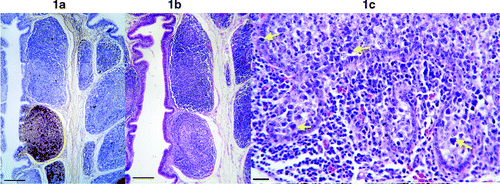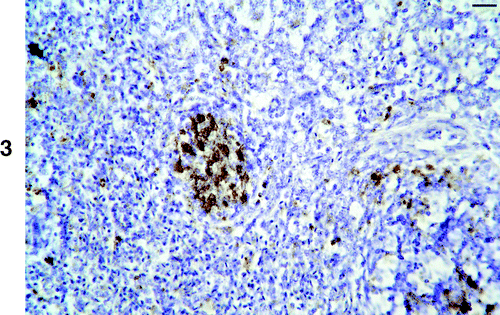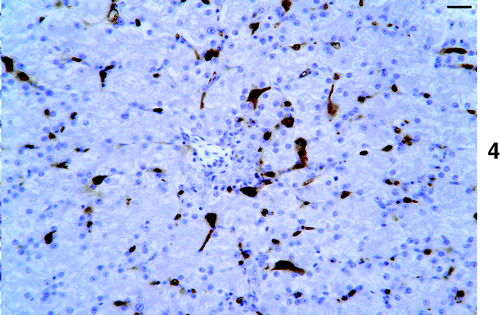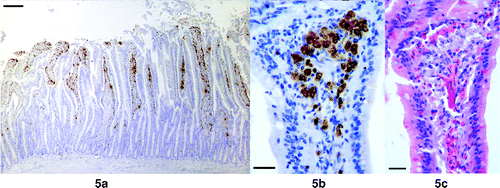Figures & data
Table 1. Results of examination of tissues from diseased geese for circovirus by in situ hybridization: where available, results of negative contrast electron microscopic examination are given in parentheses
Figure 1. 1a: Low magnification picture of the BF showing circovirus DNA (labelled brown). Some follicles are heavily infected while others are uninfected. Infected cells are present in both the cortex and medulla of follicles. Bar=100 μm. 1b: H&E-stained section of BF adjacent to the section in 1a. The heavily infected follicle is less densely populated by lymphocytes, thus appearing less intensely stained. Bar=100 μm. 1c: High magnification of a heavily infected follicle showing large degenerate cells (arrows). Bar=12 μm.

Figure 2. 2a: Low magnification of an infected thymus showing virus positive cells in both the cortex and medulla. Bar=100 μm. 2b: High magnification of the thymus showing nuclear labelling of lymphocytes (arrows), dense labelling in very enlarged cells (white arrowhead) and in an unidentified structure (see results) (black arrowhead). Bar=10 μm.



